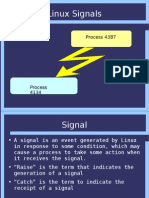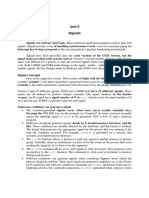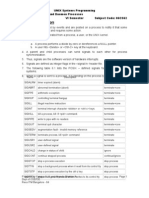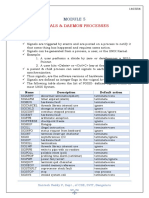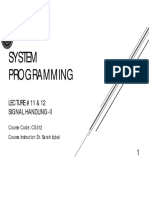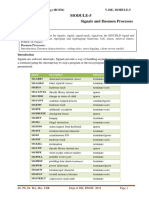0% found this document useful (0 votes)
25 views2 pagesLinux Signals Cheat Sheet
Linux signals are software interrupts used to notify processes of events like termination and interrupts. Common signals include SIGINT for graceful stops, SIGKILL for forceful termination, and SIGALRM for timed actions. Functions such as signal(), kill(), and raise() are used to manage and send signals within processes.
Uploaded by
sainiguharoy9Copyright
© © All Rights Reserved
We take content rights seriously. If you suspect this is your content, claim it here.
Available Formats
Download as PDF, TXT or read online on Scribd
0% found this document useful (0 votes)
25 views2 pagesLinux Signals Cheat Sheet
Linux signals are software interrupts used to notify processes of events like termination and interrupts. Common signals include SIGINT for graceful stops, SIGKILL for forceful termination, and SIGALRM for timed actions. Functions such as signal(), kill(), and raise() are used to manage and send signals within processes.
Uploaded by
sainiguharoy9Copyright
© © All Rights Reserved
We take content rights seriously. If you suspect this is your content, claim it here.
Available Formats
Download as PDF, TXT or read online on Scribd
/ 2


